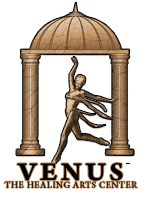 Over the Top is perhaps the most common swing fault among high handicap golfers. It occurs due to an overuse of the upper body on the downswing. As a result the club will be thrown on the outside of the intended swing plane with the club head approaching the ball from outside to in. This creates a pull if the club face is square or a slice if the club face is open.
Over the Top is perhaps the most common swing fault among high handicap golfers. It occurs due to an overuse of the upper body on the downswing. As a result the club will be thrown on the outside of the intended swing plane with the club head approaching the ball from outside to in. This creates a pull if the club face is square or a slice if the club face is open.
The Over the Top move is diagnosed from the target line view. Using your video camera pause the students swing at the address position, now using your graphic tools draw a line up the club shaft plane extending up past the shoulder of the player. Run the video until the lead forearm is just past parallel to the ground and draw a second line the length of the club from the grip end to the clubhead. You should have drawn what we term as the slot. Now run the video and as the player starts their downswing, does the club pass in between the slot or does the club come outside or above the slot. If the club is above the slot they have the Over the Top swing fault.
Body Preps
Physical Parameters Causing Over the Top and How to Diagnose Them:
In order to prevent the club from coming Over-the-Top during the golf swing several physical characteristics must be developed. It is paramount to develop a proper weight shift from your back foot to your front foot in order to start the downswing in the proper sequence. Without this initiation of the lower body during the transition, a player can easily dominate the downswing with an upper body throw right from the top. That will force the over-the-top swing plane. A proper weight shift requires several physical factors including good hip mobility, a strong core and lower body (glutes and abs) and the ability to disassociate the lower body from the upper body.
Exercises
- Stork Turns Supported
- Starfish Pattern 1
- Step Change
- Side Arm Throw
- Barriers
About the Author

Grant Bolin
Golf Fitness Specialist
As a Golf Professional for several years in Ohio, Grant has had the opportunity to work with golfers of all ages. He started teaching golf fitness when he noticed simply directing students to swing a certain way was not always effective. He began to study the biomechanics of the golf swing and the necessary moves a golfer needs to make for a less resistant and injury free swing. This will be his second season in the desert as a Golf Fitness Trainer. His certifications and background include: Certified Personal Trainer-NASM, Golf Fitness Specialist-NASM, Performance Enhancement Specialist-NASM, Titleist Performance Institute Certified, and is a PGA Apprentice.”
